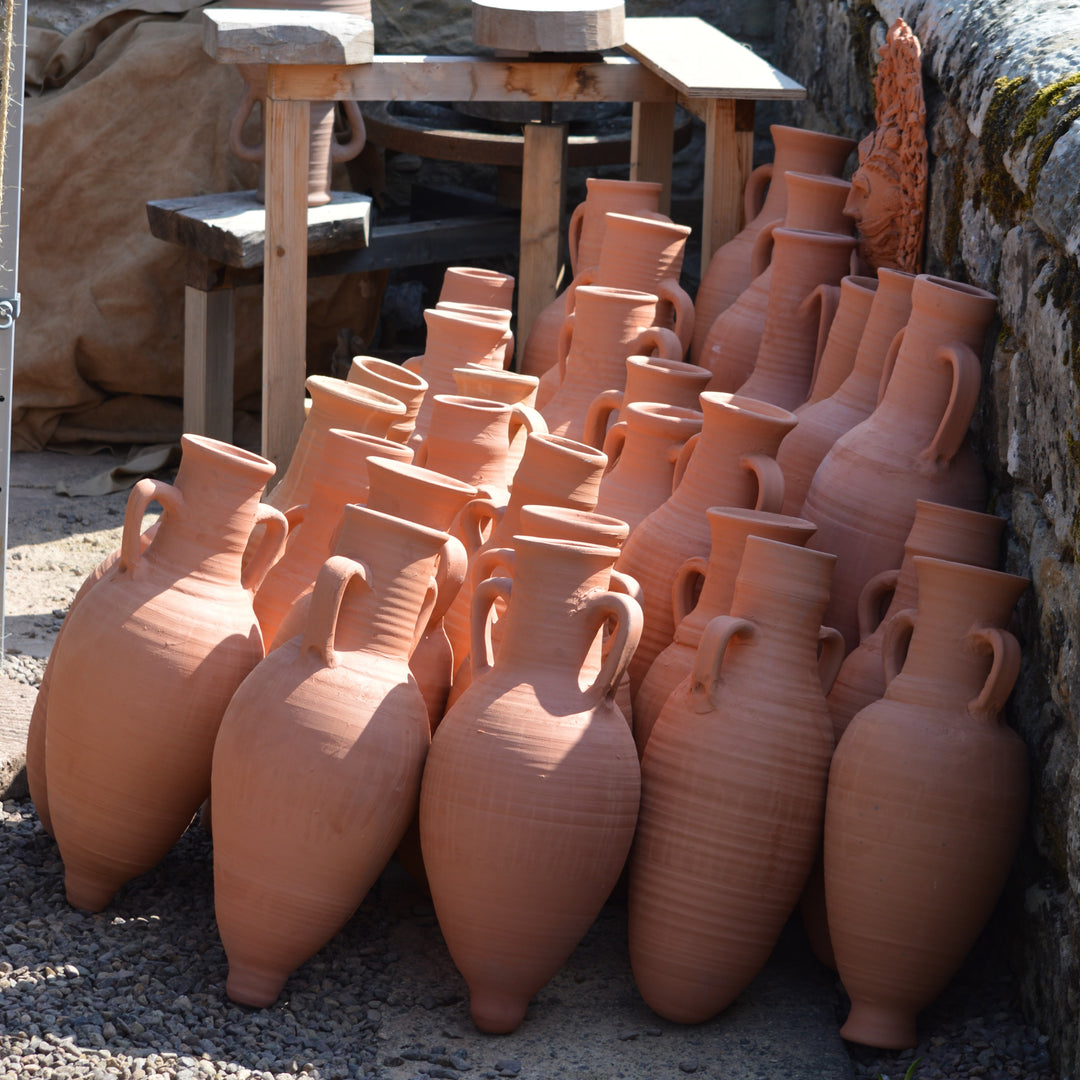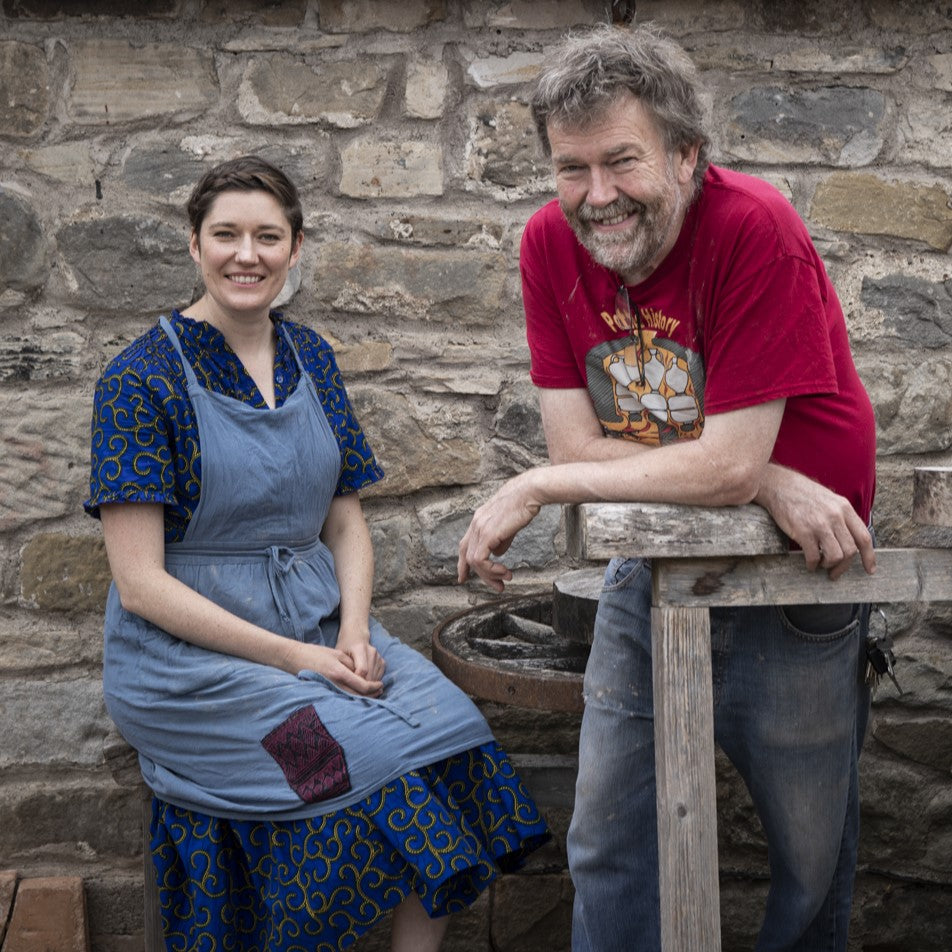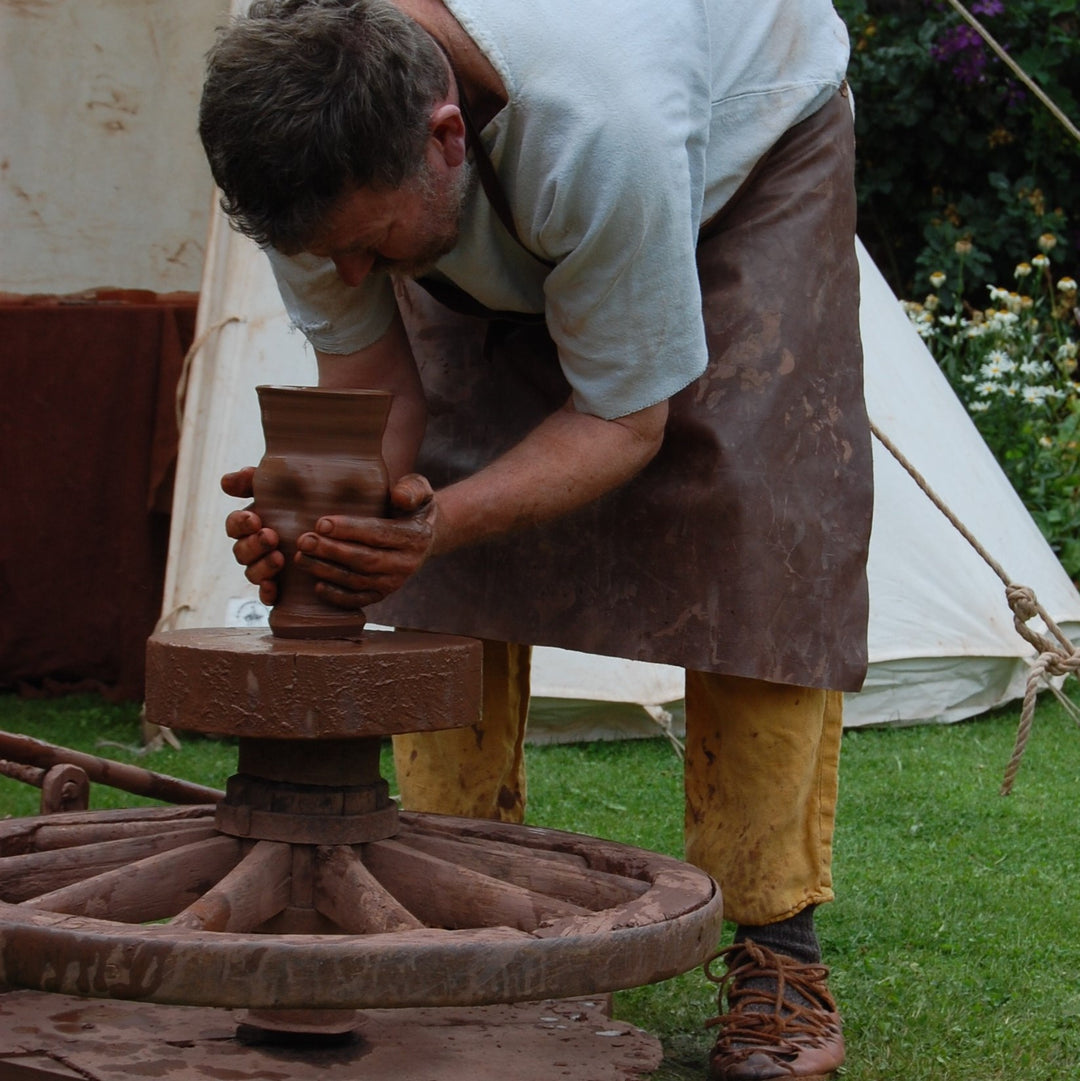Roman Brazier
- Low stock - 1 item left
- Inventory on the way
Details
In the ancient world braziers were widely used for cooking and heating. With a chamber for the charcoal fire held above the ground to allow good airflow, braziers can reach impressive temperatures.
This version also has three lugs at the top to comfortably hold a cooking pot. Based on an example found at Bearsden Roman Fort on the Antonine Wall, it is of a type known to have been used by North African troops.
Made to sit on a brazier such as this, the cooking pot shown here, also based on a find from the Antonine Wall, has a slightly rounded base for better stability whilst cooking. However it is still stable when placed on a flat topped table. Like to originals it is unglazed.
More information: Fragments of locally made vessels with North African influence have been found at forts along the line of Antonine Wall, with other similar vessels found at Chester and Holt, made by the legion XX, one of the 3 legions who built the Antonine Wall. Potter’s graffito in neo-punic language, spoken in NW Africa has been identified at Holt. North African type vessels have also been found at Old Kilpatrick, Duntocher, Bearsden, Balmuildy, Bar Hill, Mumrills, Croy Hill and Westerwood.
This suggests the presence of North African soldiers in Scotland during the Antonine period, who used culturally familiar cooking techniques, including the making of pottery vessels in the style of pottery used in North African cooking. The most distinctive forms being the braziers and casseroles; ancestral to the present Moroccan/Tunisian tagine.
'Add To Cart' items are ready to send straight away. Please be aware that if bought alongside 'Pre-order' items, your order will be sent when all items are ready.
'Pre-order' items are made to order, and we will dispatch them as soon as we have handcrafted them for you; this usually takes 90 days, but international orders can take a little longer.
Materials
Grogged terracotta
Dimensions
Brazier - Approx. 240 mm tall, 200 mm diameter
Cooking Pot - Approx. 135 mm tall (with lid on) 85 mm tall (without lid), 190 mm diameter
Production
This replica Roman pot has been hand made in Northumberland by Potted History, based on an original artefact. It has been fired to emulate the authentic Roman firing conditions, to a temperature of between 800°C & 1000°C, as the original potters would have done nearly two thousand years ago. This process often results in variations of the surface colour and texture, as is found with original Roman Pottery and giving each pot it's unique character.
Health and Safety Brazier
This is a Museum Quality Replica made using the tools and techniques that would have been used during the Roman era. As this is an unglazed item with a porous surface it will absorb some of the flavours during the cooking process. So it does not meet modern Health and Safety standards and therefore we do not advise that it is used for cooking with. When the Romans cooked with this style of brazier they would rely on applying sufficient heat to the ceramic to ensure that all bacteria was killed. They did this by slowly heating the ceramic to over 70°C and holding this temperature, or more, for at least 10 minutes. This would have killed most disease causing bacteria and temperatures of 100°C would do even more.
Under NO circumstances should this ever be used indoors or in a tent.
If you do choose to use your brazier for experimental archaeological purposes then ensure you follow advice from your local fire services. UK fire service information can be found here
Health and Safety Cooking Pot
This is a Museum Quality Replica made using the tools and techniques that would have been used during the Roman era. As this is an unglazed pot with a porous surface it will absorb some of the flavours during the cooking process, which does add to the flavour of future dishes. However, it does also mean that this pot does not meet modern Health and Safety standards and therefore we do not advise that it is used for cooking with. When the Romans cooked in these pots they would rely on applying sufficient heat to the pot and contents to ensure that all bacteria was killed. Heating to over 70°C for at least 10 minutes would have killed most disease causing bacteria and temperatures of 100°C would do even more.
Postage
All items are sent using a second class postal service, if you wish to have an item sent first class please contact my for a quote. Many Thanks
SHIPPING
'Add To Cart' items are ready to send straight away. Please be aware that if bought alongside 'Pre-order' items, your order will be sent when all items are ready.
'Pre-order' items are made to order, and we will dispatch them as soon as we have handcrafted them for you; this usually takes 90 days, but international orders can take a little longer.
We ship our fabulous replicas worldwide.
Shipping costs are worked out during checkout. They are based on where you are in the world and how heavy your parcel is, which can be very variable.
All items are sent using a second-class postal service. If you wish to have an item sent first class, please contact us for a quote. Many Thanks
RETURNS
If you aren't completely satisfied with your Potted History piece, please get in touch to organise a return. Email us at
clare@rothburycreates.co.uk
Then you can send it back at your own cost in an unused condition within 30 days, and we'll refund you for the cost of the item or items returned. If you include your order number with the returned package, that will speed things up. Please leave any original packaging intact.
Our returns address is:
Potted History, Gregory Court, Rothbury, Northumberland, NE65 7SW
PRODUCT VARIATION
Please be aware that due to items being handmade and finished, colour variations will occur during the making process, and each replica will have some differences. Also, know that the item photographed may not be the one that you receive, and colours can appear differently on different screens. Please ensure you look at all the images to get a fully formed idea of the item you are ordering as we try to capture the variations within the images we share. If you prefer a specific colour variation, please contact us before ordering.



















